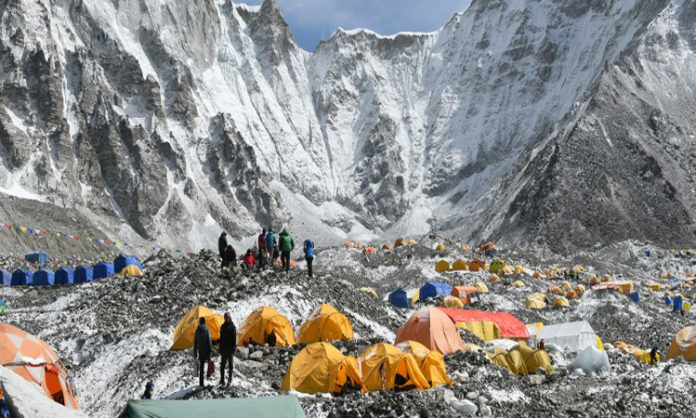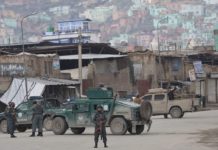Kathmandu, August 22: Nepal will make the Everest region a plastic-free zone by 2020 by banning single-use plastics, a move that will curb excessive pollution on the highest point of the Earth’s surface.
The executive council of Khumbu Pasang Lhamu Rural Municipality in Solukhumbu district reached this decision on Wednesday, the Efe news reported.
The new rule will come into effect from January 1, 2020.
Nepal is also marking the “Visit Nepal” campaign next year which aims to draw 2 million foreign visitors.
International environmentalists have expressed their concern that Nepal has not done enough to protect the fragile environment of the world’s highest peak.
Ganesh Ghimire, the Chief Administrative Officer of the rural municipality, said that plastic items fewer than 30 microns thickness had been banned.
These items include plastic bags, straws, soda and water bottles and most food packaging.
“Popular soft drink items like Coke, Fanta, Sprite, Mirinda and other beverages in plastic bottles will not be allowed,” he said. “But beverages in metal cans will be allowed.” Ghimire said that no penalty had been agreed on for people violating the rule yet.
“We will be working with the local body, trekking companies and the Mountaineering Association of Nepal to enforce the ban,” he said, adding that awareness would be created among locals and foreign visitors about the negative effects of plastic on the environment.
Local households residing in the Khumbu region will be provided with five plastic bags of different types and sizes which they can use for daily activities, said Ghimire.
Last year, 56,303 foreign trekkers and mountaineers visited the Everest region.
Hundreds of foreign mountaineers spend thousands of dollars to conquer the world’s tallest peak every spring season, which normally begins in early April and lasts until May.
As they go on the treacherous climb they leave behind a stream of litter.
In 2014, the government introduced a rule forcing each member of an expedition to bring back at least 8 kilograms (17.6 pounds) of collected garbage, in addition to the trash they generate themselves.
Each expedition team has to make a $4,000 deposit which is refunded if each climber returns with the 8 kg of waste.
But there are no such rules for trekkers.
The deposit is refunded only if the Sagarmatha Pollution Control Committee certifies that they have collected all their trash and brought it back down with them.
But many commercial expeditions still end up leaving trash scattered among the gelid snow.
“As the trekker numbers in the Everest region has been growing each passing year, it’s a good move from the local authority to impose a ban on the use of plastic,” Sitaram Sapkota, former President of Trekking Agencies Association of Nepal said.
In recent times, Everest has often earned the moniker of the world’s highest garbage dump.
Several tonnes of old equipment, oxygen cylinders, rubbish and human waste litter the iconic mountain.
Last May, the Nepal government concluded a clean-up drive of Everest collecting nearly 11 tons of trash that had piled up for decades.
The clean-up initiative, the first of its kind since Edmund Hillary and Tenzing Norgay Sherpa conquered the summit 66 years ago, was launched in mid-April and involved an elite team of 12 high-altitude Sherpa climbers who spent over a month collecting the waste. — IANS










































